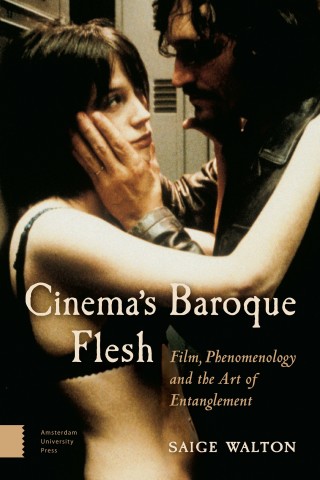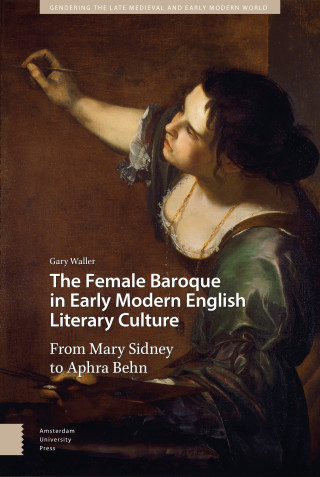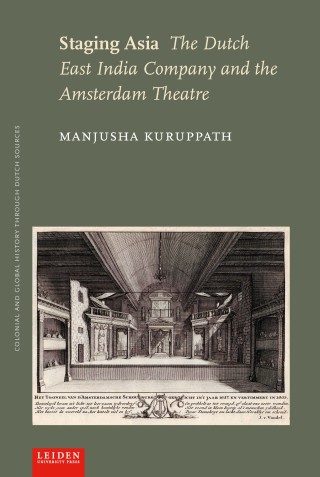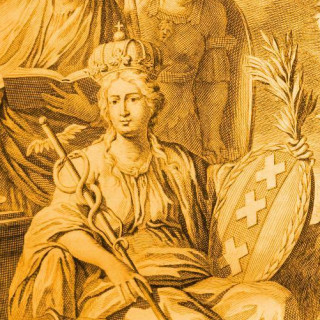
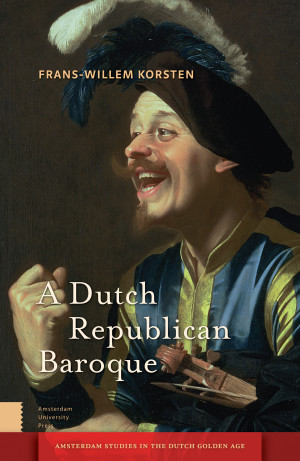
- Titel
- A Dutch Republican Baroque
- Subtitel
- Theatricality, Dramatization, Moment and Event
- Auteur
- Frans-Willem Korsten
- Prijs
- € 122,00 excl. BTW
- ISBN
- 9789462982123
- Uitvoering
- Hardback
- Aantal pagina's
- 248
- Taal
- Engels
- Publicatiedatum
- 06 - 11 - 2017
- Afmetingen
- 15.6 x 23.4 cm
- Partner

- Categorie
- Early Modern Studies
- Voorbeeld
- Download introductie
- Ook beschikbaar als
- eBook PDF - € 121,99
Acknowledgments
1. Republican baroque: a thunderclap, a city hall and two executions
1.1. Artifice: multiple worlds and one actualized
1.2. Why a Dutch Republican baroque; and why not a Golden Age?
1.3. City hall: affect — or what moves and what drives
1.4. Thunderclap: moment and event
1.5. Two executions: theatricality and dramatization
1.6. Republican baroque and slavery
2. The dramatic potential in history: Rome and the Republic — Grevius, Vondel, Knüpfer, and Job
2.1. Two incompatible political models: transfer or disruption?
2.2. Allegory tied into a knot: history’s continuity dramatically disrupted
2.3. Perverse powers, or how to make fun of the theater of torture
2.4. Catholic Rome and the figure of Job: subjection to the only possible world
3. The cruel death of worlds and political incompatibility — the brothers De Witt
3.1. Foundations of law: the master/father of a political house
3.2. The lynching of the De Witts: condensation and spectacle
3.3. The ship of state and the cruel political choice between incompatible worlds
3.4. Combat, the dramatic logic of cruelty, and the potential of difference
4. A happy split of worlds or the comedic sublime — Hals
4.1. Happiness, the comedic, and the sublime
4.2. Steen and Vondel: comical and tragic counterpoints to the comedic
4.3. The sublime intensity of the moment
4.4. Freedom: necessity and contingency
5. The seas or the world as scene — Focquenbroch and Grotius
5.1. Pre-colonial mise-en-abyme: Focqenbroch and a non-republican baroque
5.2. Moment of exchange and a non-existent ‘proper’
5.3. Juridical staging: commerce and the sea
5.4. The precariousness of mise-en-scène
5.5. Amsterdam: city and sea as world scene
6. Not a frame but a lens: the touch of knowledge — Rumphius, Vossius, Spinoza
6.1. Spectacle or theater: Rumphius as knowledge-trader
6.2. Nature internalized: res cogitans reconsidered
6.3. Sensing the world differently: the telescope
6.4. Reading through a lens: intensity and texture before scripture
7. Public theater, collective drama and the new — Van den Enden and Huygens
7.1. Theatrum mundi, public acting and the plane of collective imagination
7.2. Speaking for those who understand: a school drama in a theater
7.3. Dramatization: theatrum mundi versus mundus dramaticus
7.4. Fluid borders between theatricality and dramatization: Huygens’s Sunday
8. Interrupting time for the sake of division: history and the tableau vivant — Rembrandt (Abraham and Isaac), Quast, Vondel, and Vos
8.1. Abraham and Isaac: the opening of history through the what-if
8.2. The virtual: narrative versus dramatic interruption
8.3. A fool waiting for the political moment: tableau vivant between retrospection and anticipation
8.4. The political potential in the tableau vivant and the nature of freedom
8.5. Moment of closure: spectacle and a revolting tableau
Bibliography
Recensies en Artikelen
"A Dutch Republican Baroque offers a vigorously interdisciplinary account of a historical period, written against traditional periodization. [...] In the astonishing breadth and vigor of Korsten’s method, we find a fitting analogue for the Baroque moment he surveys."
- Hannah Crawforth, King’s College London, Renaissance Quarterly Vol. 72, 2 (Summer 2019)
"Frans-Willem Korsten’s collection of essays [...] is a bracingly original intervention on the early modern United Provinces [...] Readers will profit from Korsten’s arguments about contingency, theatricality, and the Dutch Republican markers of the Baroque. [...] They will be rewarded however they choose to confront this inviting, richly argued work." - Peter Arnade, Journal of Modern History, March 2020
"A Dutch Republican Baroque is a finely written, densely saturated set of ideas that offers a rich and rewarding contemplation." - Erin Webster, Canadian Journal of Netherlandic Studies, 2019
"Our idea of Dutch history will never recover from reading this book. As in Korsten's conception of the Baroque, reality is bifurcated, sudden possibilities are revealed and must be faced. Instead of the staid prudence and moderation that make our image of Dutch history both comforting and numbing, Korsten presents us with the harsh and theatrical reality of a Dutch Baroque. Tyranny, slavery, execution, colonialism, censorship and obscenity constitute a lurid new world view, made up of strangely familiar remnants of the old. It bears a striking resemblance to the vivid colours of the many paintings he uses to demonstrate his argument, once the thick layers of yellowed varnish have been removed from them. It is fantastic and bizarre and leaves the reader perplexed and disturbed. " - Inger Leemans, professor of Cultural History, VU Amsterdam
"This is an original and innovative book that will take the study of Dutch culture to a different level. It is an excellent example of the relevance of analysing early modern literature and the visual arts through the lens of 20th century philosophy all the while remaining historically rooted." - Hanneke Grootenboer, professor of the History of Art, University of Oxford
"The publication of Korsten's book is a true event in its own right. A Dutch Republican Baroque urges us to rethink some of the more comforting myths about our 'golden' seventeenth century. The book will get on the nerves and under the skin of many of its readers: I take that as a sign of its unquestionable quality. The book combines deft readings of the works of Dutch seventeenth-century painters (Hals), poets (Huygens), playwrights (Vondel) and philosophers (Spinoza), with an astute conceptual analysis of a historical moment: the very beginnings of the man-made modern age. A Dutch Republican Baroque is a unique feat, yet everything one would expect of a truly good book: Korsten's work is provocative, wide-ranging, astute and inspiring. It debunks myths and opens up new avenues of exploration. It reads the past against the grain and in doing so sheds light on our present. The book's analyses of the early-modern Dutch fascination and discomfort with issues of slavery and torture will force us to reconsider our own investment in times of exploitation and terror." - Jürgen Pieters, professor of Literature, Ghent University
- Hannah Crawforth, King’s College London, Renaissance Quarterly Vol. 72, 2 (Summer 2019)
"Frans-Willem Korsten’s collection of essays [...] is a bracingly original intervention on the early modern United Provinces [...] Readers will profit from Korsten’s arguments about contingency, theatricality, and the Dutch Republican markers of the Baroque. [...] They will be rewarded however they choose to confront this inviting, richly argued work." - Peter Arnade, Journal of Modern History, March 2020
"A Dutch Republican Baroque is a finely written, densely saturated set of ideas that offers a rich and rewarding contemplation." - Erin Webster, Canadian Journal of Netherlandic Studies, 2019
"Our idea of Dutch history will never recover from reading this book. As in Korsten's conception of the Baroque, reality is bifurcated, sudden possibilities are revealed and must be faced. Instead of the staid prudence and moderation that make our image of Dutch history both comforting and numbing, Korsten presents us with the harsh and theatrical reality of a Dutch Baroque. Tyranny, slavery, execution, colonialism, censorship and obscenity constitute a lurid new world view, made up of strangely familiar remnants of the old. It bears a striking resemblance to the vivid colours of the many paintings he uses to demonstrate his argument, once the thick layers of yellowed varnish have been removed from them. It is fantastic and bizarre and leaves the reader perplexed and disturbed. " - Inger Leemans, professor of Cultural History, VU Amsterdam
"This is an original and innovative book that will take the study of Dutch culture to a different level. It is an excellent example of the relevance of analysing early modern literature and the visual arts through the lens of 20th century philosophy all the while remaining historically rooted." - Hanneke Grootenboer, professor of the History of Art, University of Oxford
"The publication of Korsten's book is a true event in its own right. A Dutch Republican Baroque urges us to rethink some of the more comforting myths about our 'golden' seventeenth century. The book will get on the nerves and under the skin of many of its readers: I take that as a sign of its unquestionable quality. The book combines deft readings of the works of Dutch seventeenth-century painters (Hals), poets (Huygens), playwrights (Vondel) and philosophers (Spinoza), with an astute conceptual analysis of a historical moment: the very beginnings of the man-made modern age. A Dutch Republican Baroque is a unique feat, yet everything one would expect of a truly good book: Korsten's work is provocative, wide-ranging, astute and inspiring. It debunks myths and opens up new avenues of exploration. It reads the past against the grain and in doing so sheds light on our present. The book's analyses of the early-modern Dutch fascination and discomfort with issues of slavery and torture will force us to reconsider our own investment in times of exploitation and terror." - Jürgen Pieters, professor of Literature, Ghent University
Frans-Willem Korsten
A Dutch Republican Baroque
Theatricality, Dramatization, Moment and Event
De onderstaande tekst is niet beschikbaar in het Nederlands en wordt in het Engels weergegeven.
In the Dutch Republic, in its Baroque forms of art, two aesthetic formal modes, theatre and drama, were dynamically related to two political concepts, event and moment. The Dutch version of the Baroque is characterised by a fascination with this world regarded as one possibility out of a plurality of potential worlds. It is this fascination that explains the coincidence in the Dutch Republic, strange at first sight, of Baroque exuberance, irregularity, paradox, and vertigo with scientific rigor, regularity, mathematical logic, and rational distance. In giving a new historical perspective on the Baroque as a specifically Dutch republican one, this study also offers a new and systematic approach towards the interactions among the notions of theatricality, dramatisation, moment, and event: concepts that are currently at the centre of philosophical and political debates but the modern articulation of which can best be considered in the explorations of history and world in the Dutch Republic.
Auteur
Frans-Willem Korsten
Frans-Willem Korsten holds the chair by special appointment in Literature and Society at the Erasmus School of Philosophy and is associate professor at the Leiden University Centre for the Arts in Society (LUCAS). At AUP he published 'A Dutch Republican Baroque: Theatricality, Dramatization, Moment and Event' (2017) and his latest publication is 'Art as an Interface of Law and Justice: Affirmation, Disturbance, Disruption' (Bloomsbury, 2021).

